Research - (2022)Volume 6, Issue 1
Aim: The aim of the study was to evaluate knowledge, awareness, and practice related to forensic odontology among
dental students in Chennai.
Materials and methods: This cross-sectional study was conducted among the dental students in Chennai. To evaluate the knowledge of the participants about forensic dentistry, a self-administered questionnaire containing 10 questions pertained was made.
Results: A total of 125 participants were included in this study out of which, 75.20% were males and the remaining 24.80% were females.86.40% of the participants said that they were aware about the bite mark patterns of the teeth and the remaining 13.60% of the participants said that they were not aware about the bite mark patterns of the teeth.
Conclusion: The results show that there is an adequate level of knowledge and awareness regarding forensic odontology in all the groups investigated. Overall, the three groups also had adequate levels of good practice related to dental record keeping. However, regarding individual questions, there were some instances among the groups of inadequate levels of good practice.
Forensic dentistry is a challenging and fascinating area of forensics which involves the use of dental science to identify people who have died by comparing ante- and post-mortem doses [1]. Dental identification has been essential to detect deceased persons from 66 AD to 1849 and the first case was accepted by law. In recent times forensic dentistry has evolved into a new ray of hope for forensic medicine, but forensic medicine still is a vital and integral field in India. There are few institutions offering forensic dentistry formal training and there are no employment opportunities for skilled forensic dentists who have graduated abroad [2].Forensic odontologist profoundly examines unknown human remains, identification of the victim in a mass disaster, assessment of sex from skeleton remain, age estimate of both living and dead analyses, assessment of cases of abuse such as the teens, the marital partner and the family. Forensic odontologist profoundly examines unknown human remains, identification of the victim in a mass disaster, assessment of sex from skeleton remain, age estimate of both living and dead analyses, assessment of cases of abuse such as the teens, the marital partner and the family[3].
Important forensic odontological applications include the identification of human remains through dental record and aid in the crime scene; suspected child or adult misuse by means of bite marks or physical injuries; age and sex identification for the live or deceased; and the presentation of forensic evidence as a court expert witness [4]. In recent times there have been more natural and man-made disasters in India. Under these conditions, victims’ bodies are mutilated and not recognized, where they can identify the vital role of dental surgeons.
Dentist should be aware of forensic dentistry, because dental identifiers provide a correct source of victim or suspect identification. There are four major areas of interest in forensic dentistry, dentistry, denture mark, cheiloscopy (lip prints study) and rugoscopy (study of palatal rugae patterns) [5]. A systematic review of recent cross-sectional studies regarding the levels of knowledge, awareness, and practical application of forensic odontology among dentists in India revealed inadequacy and considerable variation in the practice of forensic odontology among dentists. Our team has extensive knowledge and experience that has translated into high quality publications .This study was carried out to analyses and asses the awareness of forensic odontology among dental students in private Institution in Chennai [6].
This cross-sectional study was conducted among the dental practitioners in Chennai. To evaluate the knowledge of the participants about forensic dentistry, a self-administered questionnaire containing 10 questions pertained was made. The questionnaire was validated and later distributed using Google forms [7]. The participation of the subjects was kept voluntary and nobody was obligated to fill the form. Questions were answered with “yes” or “no” or by marking the correct responses. The participants said that maintaining dental records would not help them to identify the deceased and the crime suspects and the remaining 24% of the participants said that maintaining dental records might help them to identify the deceased and the crime suspects. Frequency analysis and percentage analysis were done with the obtained results. To assess the correlation Chi square test was done using the SPSS software version [8].
There were a total of 125 participants in this study out of which, 75.20% were males and the remaining 24.80% were females .The participants of 36% were from the undergraduate and the remaining 36% were from the post graduate and 93.60% of the participants said that they do maintain dental records of the patients and the remaining 6.4% of the participants do not maintain any dental records , 71.20% of the participants said maintaining dental records would help them to identify the deceased and the crime suspects. In below figure blue represents male and green represents female. 75.20% were males and the remaining 24.80% were females (Figure 1).
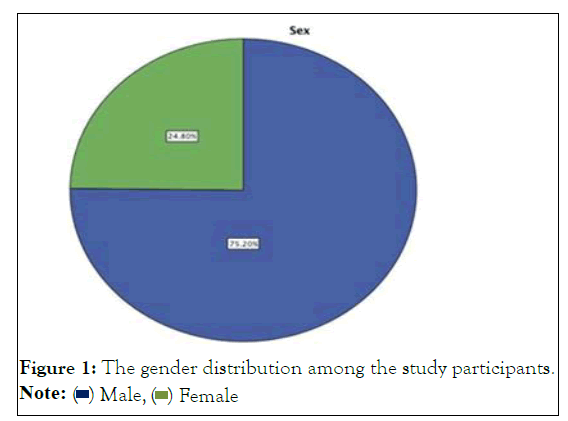
Figure 1: The gender distribution among the study participants. 
The females told that they estimate the age of an individual by examining the teeth. In that 15.2% of females told that they estimate the age of an individual by the physical appearance and 2.4% of females told that they estimate the age of an individual by examining the teeth as well as the physical appearance. The 5.6% of male told that they estimate the age of an individual by examining the teeth. 41.6% of male told that they estimate the age of an individual by their physical appearance and 28% of male told that they estimate the age of an individual by examining the teeth as well as the physical appearance of the participants said that they were aware about the bite mark patterns of the teeth and the remaining 13.60% of the participants said that they were not aware about the bite mark patterns of the teeth.
The females are aware that they can present the dental evidence in the court as evidence and 18.4% of females said that the dental evidence may be presented in the court as evidence. The participants said that forensic dentistry would help them to solve the mystery that occurred during the crime scene. 4% of the participants said that forensic dentistry would not help them to solve the mystery that occurred during the crime scene. The remaining 35.20% of the participants told that maybe it would help them to solve the mystery which occurred during the crime scene. The blue represents yes and green represents no. The 93.60% of the participants said that they do maintain dental records of the patients and the remaining 6.4% of the participants do not maintain any dental records (Figure 2).
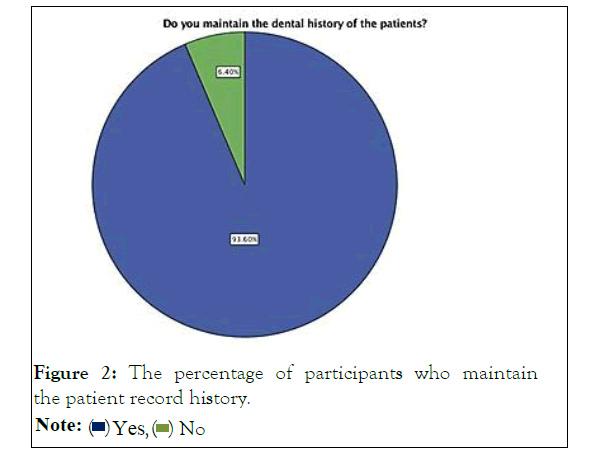
Figure 2: The percentage of participants who maintain the patient record history. 
In our study the dental students were very much aware of forensic dentistry. They also had a thorough knowledge on the bite-marks. Participants were also aware that these dental records could be used as evidence for witnesses in the court. Majority of the dental students are having records of the dental status of the patients. In a study done among the under graduates and Postgraduate Students at Dow University of Health Sciences, it is said that they were much aware of forensic dentistry. Dental records may help to recognize people who have suffered crime, murderous analyses, mass victims or missing.
For several reasons it is important to verify a deceased individuality. In the event of catastrophic and unforeseen actions, it is vital to close the immediate family members down. Another motive is the officially approved disposition of domains requiring a dead record. A confirmation of individuality is necessary to issue a death certificate. Due to these causes, dental identification takes primary responsibility for the detection of remaining remains when changes occur in post-mortem tissues; traumatic tissue damage occurs. The participants said that maintaining dental records might help them to identify the deceased and the crime suspects (Figure 3).
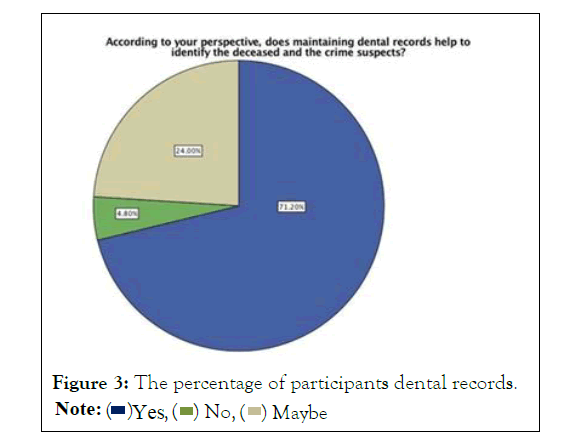
Figure 3: The percentage of participants dental records. 
Dental substantiation comparison is one of the most consistent and unfailing methods because the teeth can bear intense temperature changes and can withstand decay. The conditions of a person's teeth vary however, and the information of decayed, missing and filled teeth can be evaluated and compared with each other in any instance. Dental records comparison (ante-mortem with post- mortem) three categories include the teeth, periodontal tissue and anatomical characteristics for detection are included. Dental tissue and dental restorations are resistant in nature, which makes them the most suitable source of DNA, owing to changes caused by environmental extremes, such as temperature and decomposition. Blue represents by examining the teeth, green represents by physical appearance and grey represents both. 7.2% of females told that they estimate the age of an individual by examining the teeth. 15.2% of female told that they estimate the age of an individual by the physical appearance and 2.4% of female told that the estimate the age of an individual by examining the teeth as well as the physical appearance. 5.6% of male told that they estimate the age of an individual by examining the teeth. 41.6% of male told that they estimate the age of an individual by their physical appearance and 28% of male told that they estimate the age of an individual by examining the teeth as well as the physical appearance (Figure 4).
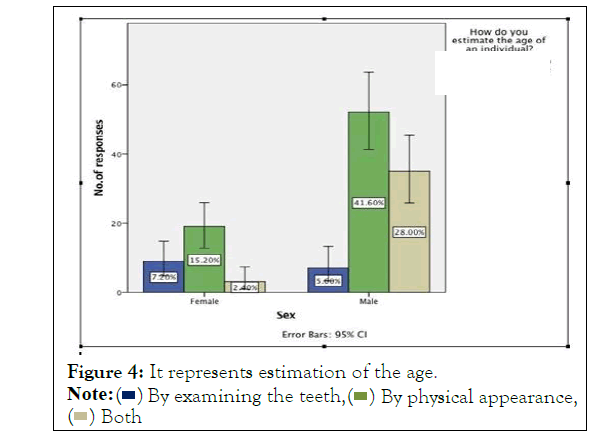
Figure 4: It represents estimation of the age. 
The blue represents yes, green represents no and grey represents maybe. 60.80% of the participants said that forensic dentistry would help them to solve the mystery that occurred during the crime scene. The participants said that forensic dentistry would not help them to solve the mystery that occurred during the crime scene. 60.80% of the participants said that forensic dentistry would help them to solve the mystery that occurred during the crime scene and the remaining 35.20% of the participants told that maybe it would help them to solve the mystery which occurred during the crime scene (Figure 5).
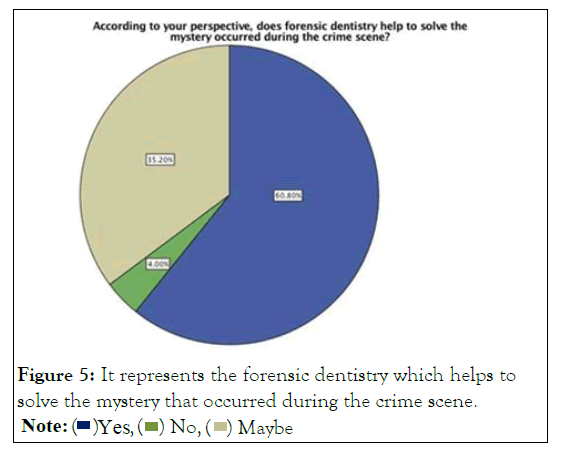
Figure 5: It represents the forensic dentistry which helps to solve the mystery that occurred during the crime scene. 
We would like to conclude that the dental students are very much aware about forensic dentistry and also they have a thorough knowledge about it. Furthermore medical meetings and dental camps can be conducted for the dental students so that all the dental students, those who were not aware about it also will get a chance to know about it and it will create an interest in the forensic dentistry among the dental students.
[Crossref ] [ Google Scholar]
Citation: Ram AJ (2022) Awareness about Forensic Dentistry among the Dental Students in Chennai: A Hospital based Survey. J Oncol. 6:610.
Received: 03-Jan-2022, Manuscript No. JOY-22-46214; Editor assigned: 05-Jan-2022, Pre QC No. JOY-22-46214 (PQ); Reviewed: 19-Jan-2022, QC No. JOY-22-46214; Revised: 24-Jan-2022, Manuscript No. JOY-22-46214 (R); Published: 31-Jan-2022 , DOI: 10.35248/JOY-22.6.610
Copyright: © 2022 Ram AJ. This is an open-access article distributed under the terms of the Creative Commons Attribution License, which permits unrestricted use, distribution, and reproduction in any medium, provided the original author and source are credited.